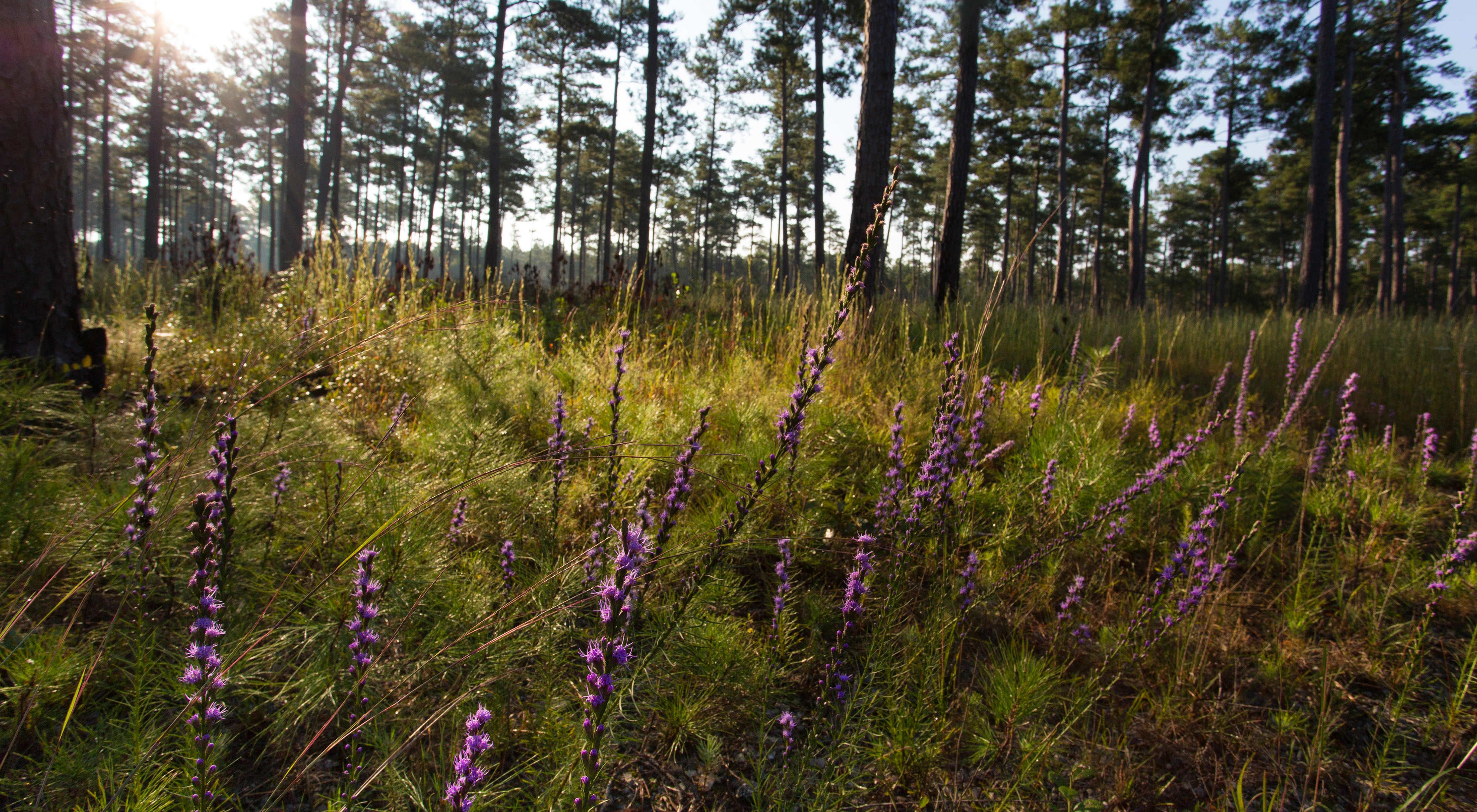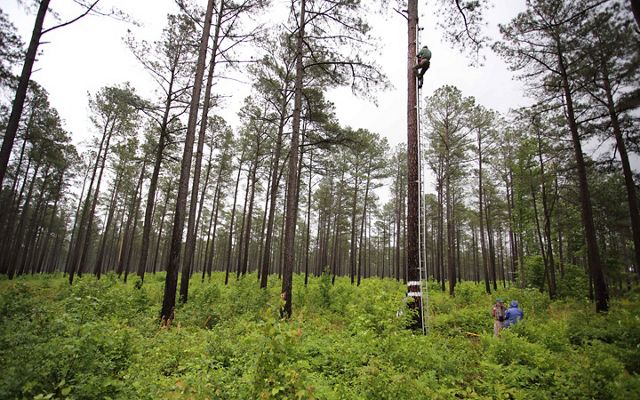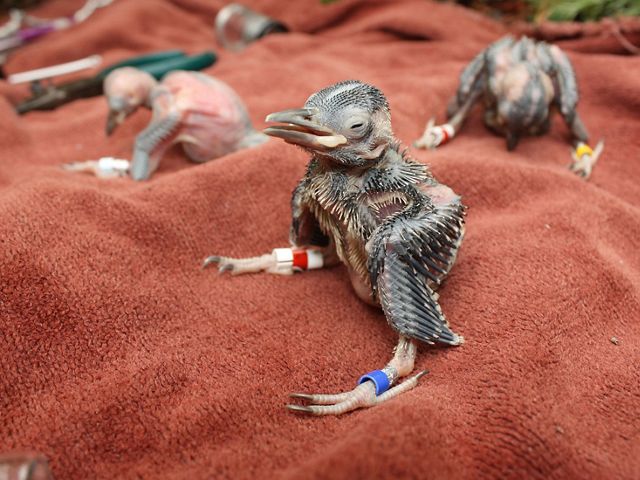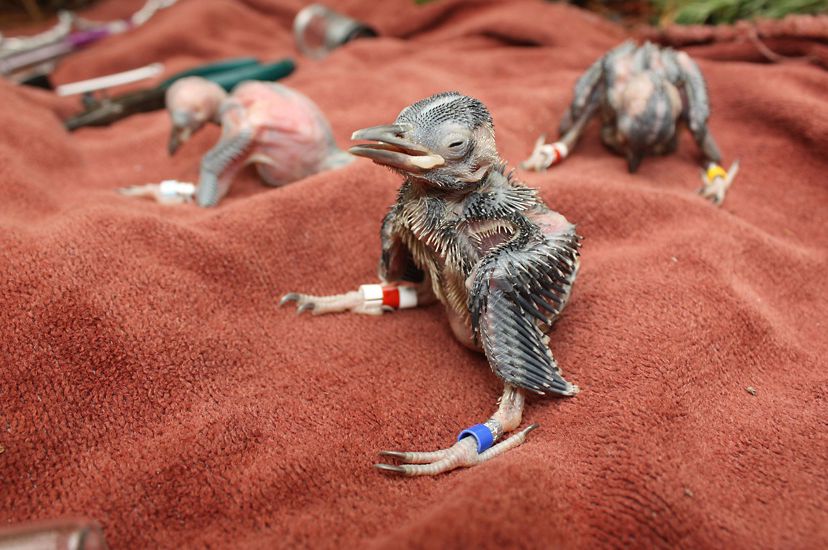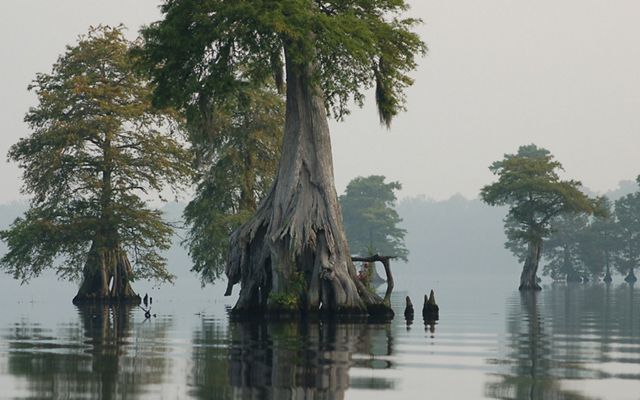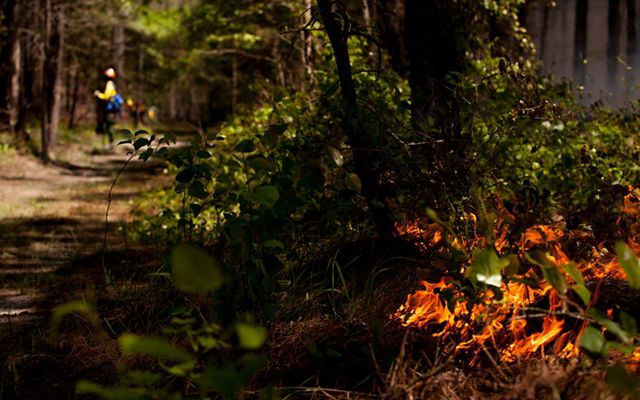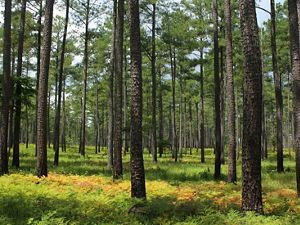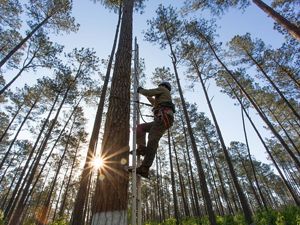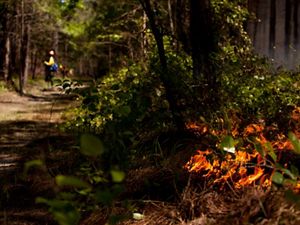Virginia Pinelands Program
Protecting centuries-old cypress swamps, the state's rarest bird and Virginia's founding forest.
Through creative partnerships, land acquisition, ecological management, and other conservation strategies, Virginia's Pinelands Program works to protect vast expanses of wetlands and rare forests in southeast Virginia that are home to centuries-old cypress swamps and rare longleaf pine savannas.
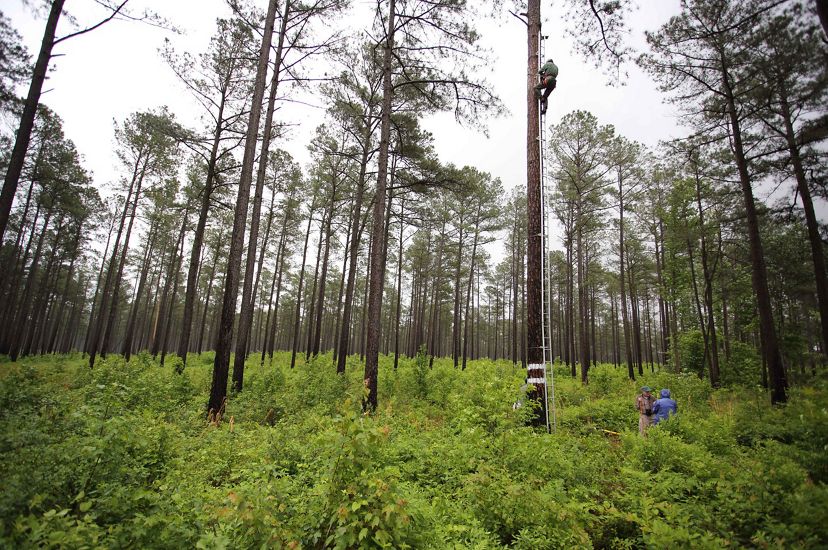
Virginia's Founding Forest
Despite its proximity to a major metropolitan area, Virginia's Pinelands supports an exceptional array of over 100 rare plants, animals and natural communities.
At Piney Grove Preserve we're working to restore the longleaf pine of the commonwealth's founding forest and the northernmost population of the red-cockaded woodpecker, a bird once in danger of extirpation in Virginia.
Five significant river systems—the North Landing, Northwest, Meherrin, Nottoway and Blackwater rivers—provide important wildlife corridors and collectively support a third of the state's non-tidal wetlands. The Northwest River provides drinking water to 60% of the City of Chesapeake, while the Nottoway River is one of several sources of drinking water for the City of Norfolk.

State Designation: Piney Grove Protection
In September 2021, Piney Grove Flatwoods became Virginia’s 66th natural area preserve. TNC will retain ownership of this 446-acre tract; dedicating it as part of the Virginia Natural Area Preserve System will bring the state’s highest level of protection to this critical habitat at our Piney Grove Preserve.
The Department of Conservation and Recreation (DCR), through its Natural Heritage program, will bolster TNC's efforts to protect vulnerable wildlife such as barking frogs and red-cockaded woodpeckers. Establishing Piney Grove Flatwoods Natural Area Preserve is an exciting new chapter in pine savanna restoration, building upon DCR’s 20 years of expert science and contributions.
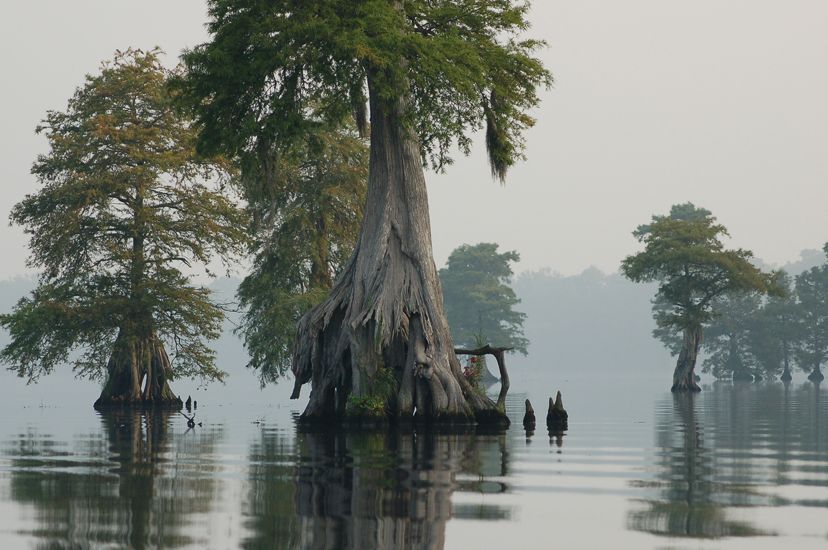
Land Protection: The Great Dismal
TNC brokered the nation’s first major corporate donation of conservation land in 1973. The following year, Union Camp Corporation's gift of nearly 50,000 acres established Great Dismal Swamp National Wildlife Refuge, which today encompasses more than 110,000 acres.
Due to a history dating back to George Washington of ditching and draining, the swamp's hydrology—its plumbing—is out of balance. While fire is a natural disturbance among the swamp’s ecological processes, a swamp that’s too dry becomes more susceptible to damaging wildfires.
TNC works with the U.S. Fish and Wildlife Service to reduce the threat of these intense fires. Acting as “nature’s plumber,” we’re seeking to manage the water flow, mimic seasonal flooding and re-wet the swamp. This project involves installing and maintaining several water control systems across the refuge. We’re not going to stop wildfires in the swamp, but we can reduce their intensity to make the refuge healthier for wildlife and safer for communities.
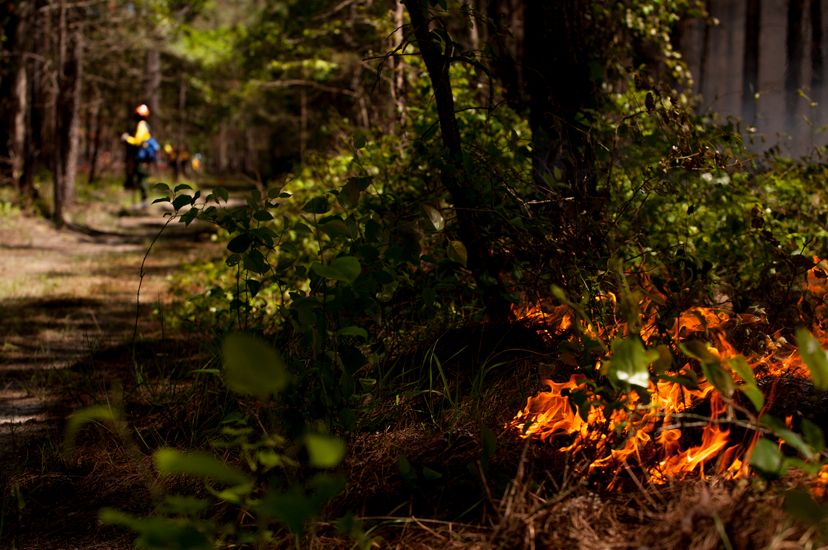
Conservation at Work
- Good Fire: Using science-based methods, TNC partners with state and federal agencies to return fire to the landscape. In 2017 we successfully conducted the largest ever controlled burn at the 2,700-acre Piney Grove Preserve.
- Restoring Habitat: We collaborate with partners at the College of William & Mary’s Center for Conservation Biology, as well as state and federal agencies, to monitor the population red-cockaded woodpecker populations at Piney Grove Preserve and Great Dismal Swamp NWR.
- Land Management: We work with private landowners to restore globally rare pine savanna habitat. Through the Virginia Aquatic Resources Trust Fund, we are restoring forested wetlands to establish strategically located wildlife corridors.
- Conservation Easements: A conservation easement is a legal agreement, recorded with the deed, that restricts the type and amount of development that can take place on the land. TNC works with private landowners to secure easements along river corridors, protecting water quality and riparian habitat. TNC served on an advisory board encouraging the City of Chesapeake to enact a new purchase of development rights program to protect open space. The city purchases development rights from willing private landowners, who then retain ownership while permanently keeping their lands as open space or in agricultural use.
- Education and Outreach: We foster a conservation ethic and appreciation for nature through education and outreach. TNC works to influence land-use planning and is helping local communities learn about development approaches that preserve local character, history, traditions, and, ultimately, the ecosystem itself.
- Shaping Public Policy: TNC is a member of Virginiaforever, a campaign to garner increased public support and state funding for conservation.
Contact
Brian van Eerden
Program Director
email: bvaneerden@tnc.org
Stay in Touch
Subscribe to Nature News, our monthly e-newsletter. Get the latest news and updates about our conservation efforts here in Virginia and around the world, delivered straight to your inbox.
